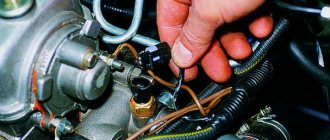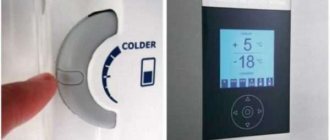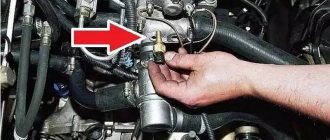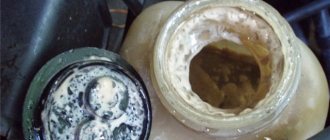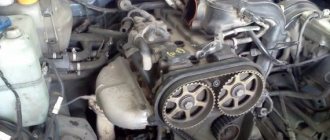Is it necessary to warm up the engine at all, when and why is this done?
Motorists have known about the need to warm up before driving almost since childhood. Moreover, after driving a cold car, many are immediately convinced that driving with a cold engine is less comfortable.
For example, on carburetor cars the engine reacts jerkily to the fuel supply or even stalls, the injection unit is noisy and pulls worse. And, according to experts, it consumes much more fuel. And only after some time and warming up, the operation of the power unit returns to normal.
The second reason is the consistency of the engine oil. Cold oil is less fluid, which means it will lubricate rubbing parts worse and slower. For example, the camshaft bearings are located relatively far from the oil pump and it takes a long time for lubricant to reach them. This is especially noticeable at low temperatures and viscous oil.
If these parts do not have enough lubrication, then within a few seconds after the engine is running under good load they will begin to wear out heavily. Along the way, the shaft itself with the cylinder head will be damaged. In addition, gearboxes also need good lubrication. With cold transmission oil, for the reasons stated above, the service life of the gearbox will be significantly reduced under load.
The third reason for poor performance of a cold engine is related to the outside air. When cold air is sucked into the engine, it creates a lean air-fuel mixture due to more oxygen in it. This leads to a drop in power and fuel consumption. After all, in order for the carburetor engine not to stall, the driver has to turn on the choke, that is, increase the supply of the fuel mixture. Although in modern injection cars the mixture is enriched automatically, the principle remains similar.
So, as can be seen from all of the above, preheating a modern internal combustion engine, if not extremely necessary, is then very desirable. However, a problem often arises: the engine takes a long time to heat up. It is especially acute in cold weather. There may be several reasons for this phenomenon. Let's figure it out.
Getting started with the car
One of the important nuances when operating a car is preparing it for movement. First of all, this applies to working with the engine. First, before starting to move towards the intended goal, it is necessary to prepare the engine for its active operation during movement, that is, it should be warmed up. After a long period of inactivity, which is a period of more than 3-4 hours in summer, and 1-2 hours in winter, the engine temperature drops to a minimum value. In order to avoid many problems, you need to start the car and wait until the engine temperature sensor reaches at least 50 degrees. If you like to drive a cold engine, then be prepared for increased oil consumption, which in turn will lead to faster engine wear and additional costs for consumables.
Drivers often face the problem of taking a long time to warm up the engine, especially in winter. Waiting takes up a lot of time, and you don’t really want to sit, for example, in a cold car in winter. In this case, it is worthwhile to figure out why the engine takes a long time to heat up and whether this is a consequence of any malfunction in its operation.
Related article – Why does it snow?
Reasons for long engine warm-up
- The ambient temperature is too low and, as a result, the coolant temperature in the radiator is too low. The easiest way out of this situation is to insulate the radiator, engine compartment, hood and engine. Ordinary plywood or cardboard inserted in front of the radiator very quickly and effectively solves the problem of engine cooling while driving. As for the car blanket and hood insulation, with this solution a cold engine will warm up faster and reach operating temperatures.
- Thermostat is not working properly. For those who do not know or simply forgot, it is worth recalling that this part is responsible for directing the flow of coolant along the large or small cooling circle. The small circle prevents antifreeze or antifreeze from entering the radiator and ensures its circulation only inside the engine. As a result, the motor heats up faster.
A constantly open thermostat prevents antifreeze from reaching the required temperature in winter. This is why the engine takes a long time to warm up at this time of year. Solution: repair or replace the thermostat.
- Air lock in the cooling system. As with any heating system, air interferes with the normal passage of fluid. In this case, it is necessary to determine the cause of the traffic jam and eliminate it.
- A less common cause of long warm-up may be a feature of the factory settings of the car’s electronic control unit (firmware) or their incorrect settings during flashing (chip tuning). One of the easiest solutions is to install an additional on-board computer with a function for adjusting the fan temperature.
- Premature operation of the cooling system fan can also lead to long warm-up times. It happens that the specified fan turns on even after starting a cold engine.
Where to look for the cause of engine overheating
Some motorists find that the engine is overheating, but cannot find signs of this problem. The question immediately comes to mind: “What should I check and change first?” In my opinion, first of all you need to check the engine for exhaust gas breakthrough.
Through a hole or crack in the cylinder head or block, the cause may also be a broken head gasket. At the same time, you can immediately test the operation of the radiator and expansion tank cap. This test is described below.
old and new thermostats; exhaust gas gust check
If the car is over ten years old, the thermostat must be replaced. In the event that the operation of the thermostat really raises suspicions, there is no need to blame the pump at all.
We change it, if it doesn’t help, then you need to remove the pump and check it. When the result remains unchanged, then you need to flush the cooling system. Checking other details requires deeper clarification.
What's the result?
So, we can conclude: if the engine does not warm up, the reasons are quite varied. As a rule, most of them are directly connected to the cooling system.
Some of these problems can be solved simply and on your own. In some cases, it is enough to clean the cooling system and then add antifreeze or antifreeze to the level. Other problems may require assistance from a qualified professional.
If for owners of old cars, warming up is a forced and necessary procedure, then when applied to new cars, this method allows you to extend the service life and increase the resource of the unit.
The engine does not reach operating temperature, the engine temperature arrow does not rise during warm-up or falls while driving: causes of the malfunction.
Main reasons - looking for problems during long warm-up
There can be quite a lot of reasons. They are not always hidden in the units and components of the machine; sometimes the quality of service becomes a more serious precondition. To correctly find the problem, you should check all possible breakdowns and make sure there are no minor troubles. It is quite possible that you can fix this problem without visiting a service station. Here are important ideas to check when this problem occurs:
- incorrectly selected antifreeze or poor quality of technical fluids in the car’s cooling system, this causes various problems with the warming up process;
- unsuitable or low-quality oil - if the viscosity is too high, the lubricant hardens, and the engine cannot gain normal speed and generally warm up adequately in winter;
- failure of temperature sensors - this could be a thermostat opening sensor or a sensor showing the temperature on the instrument panel, they should be checked first;
- thermostat - it is quite possible that the device is stuck in the open position, in which case the liquid will constantly circulate in a large circle, cooling in the radiator;
- air and ice plugs in the cooling system - plugs often prevent fluid from circulating, which creates an extremely unpleasant effect for the engine and the driver of the car.
When the engine gets very hot
When the engine often gets very hot, at a minimum, it causes inconvenience, and at a maximum, it always results in serious problems, repairs and unexpected costs. The engine gets hot for several reasons. This may be caused by malfunctions in the cooling system or the reasons lie in the engine itself. To know what to look for, you need to know where to look, so it's wise to figure out why your engine is getting hot:
- Perhaps the most common reason why a diesel engine overheats is a clogged radiator. The owner either forgets to clean the radiator, or has recently been using his vehicle too actively. In any case, the radiator needs to be washed and purged;
- An equally common reason is the driver’s lack of memory. You should check the amount of coolant in the cooling system more often. It also wouldn’t hurt to find out the reasons for her disappearance;
- The thermostat has failed. Due to dirt getting into it, it may begin to jam. Either accumulations have formed in the thermostat, due to which it ceases to adequately perceive temperature;
- Another reason why the engine overheats may be that the exhaust valve has simply burned out. As a result, gases are released at extremely high temperatures, which causes the liquid in the cooling channel of the head to simply boil. The resulting steam plug blocks the operation of the entire cooling system;
- Or the same cooling channels are clogged from the inside by the products of engine operation deposited there. The cross-section of the channels has decreased - less liquid began to pass through them, which means the amount of heat removed has decreased;
- Lack of coordination between the ignition and injection systems can also be the reason why the engine heats up quickly. Due to the fact that ignition can be delayed, the liquid in the cylinder ignites when the exhaust valve is open. The cooling channels quickly heat up, as if the exhaust valve had burned out;
- Another reason when the engine overheats is a poorly cooled radiator due to the cause of weakened air flow. This may be caused by a stretched belt on the fan drive;
- The pump supplying coolant to the entire cooling system could fail. Or the sealing of the system tubes and their connections is broken. In this case, you need to check all connections, find out why the leak occurs, and replace the failed joints and pump.
These are just some of the reasons why the engine may overheat. To establish the truth, it is advisable to contact specialists. To consolidate the material, let us remind ourselves of the symptoms that something is wrong with the engine:
- A sharp decrease in engine power;
- Unpleasant melody of tapping “fingers”;
- The coolant sensor has been at the red mark for a long time.
If you notice the symptoms of an engine “disease” on the way, you shouldn’t think: if I hold on a little longer, there’s just a little bit left, it’ll be patient. No need to force the engine. Although it is iron, it is not eternal.
Why does the engine get hot?
The main reason for the increase in engine temperature is considered to be a malfunction of the radiator. Its main task is to ensure normal engine cooling. This task is difficult to cope with if the walls of the radiator are covered with scale or dirt. If the engine overheats on a busy highway and you have caustic soda on hand (it can be found in any boiler room), then you can “revive” the engine on your own.
First, you need to stop as quickly as possible and turn on the stove at full power. This will reduce the temperature inside the propulsion system. Secondly, a soda solution (50 g per 2 liters of water) should be poured into the radiator and run the engine for 15-20 minutes. Such actions will help rid the radiator walls of adhering dirt and excessive scale.
Video tutorial on why the engine gets hot
Thus, the following reasons for engine overheating can be identified:
- Insufficient fluid level in the vehicle's cooling system. This is the most popular reason for motor failure. In order to prevent critical situations, it is necessary to carefully monitor her condition before the next trip.
- Insufficient air cooling level. This may be caused by the fan not running at full power. The main reason is the weakening of the transmission belt. A particularly common problem in Kalina.
- Incorrect fuel injection adjustment. The engine is started by getting gasoline into the internal combustion engine chamber. At this moment, a spark is supplied, which increases the temperature inside the engine due to an increase in the amount of exhaust gases. A malfunction of this system can result in engine valves not opening at the right time. As a result, the likelihood of overheating of the cylinder head increases, which manifests itself in a decrease in engine power.
When the engine takes a long time to warm up
In winter, with the onset of frost, car owners have one experience replaced by another, and the latter is much more troublesome than the usual overheating of the engine. When it’s -20 -30 °C in the morning and the engine takes a long time to warm up, you can’t help but remember the beautiful, warm days. Well, it’s okay that the engine warms up a little, the main thing is that the fingers straighten! But the heat is still far away, and problems with the engine are already happening. In winter, there are three reasons why a diesel engine heats up slowly:
- The thermostat is made;
- An air lock has appeared in the coolant system;
- The motor is not insulated enough.
Checking the thermostat
Designed to be sensitive to changes in temperature, regardless of changes in pressure in the coolant system, the service thermostat will limit the circulation of antifreeze to a small circuit through the cooling jacket of the block and cylinder head. As the temperature difference between the environment and the engine increases, the thermostat smoothly opens the coolant supply from the main radiator to the engine. This is exactly what happens in the opposite case. Thanks to this, the temperature limits of engine operation are maintained and limited, and the vehicle interior is heated.
The engine does not warm up at all, it takes a long time to warm up to operating temperature
Why does the engine take a long time to warm up?
Why does the engine get hot in winter?
At idle, the engine may warm up to operating temperature, but as soon as you start driving and drive a couple of kilometers, the heat seems to blow out of the radiator. Or maybe that’s how it is?
Winter is on the street…
...and you didn’t take care of the radiator insulation? In that case, you are a deer...
At least place a piece of cardboard in front of the radiator for the winter, because it is in the radiator that the coolant (antifreeze) cools down! And no engine is enough to warm it up if it’s minus 30 outside and you’re driving at a speed of 100 km/h. Also check the engine lubrication system.
But this is one of the options. It happens that the radiator is well insulated and heat should not escape from it, but the engine still does not warm up.
Thermostat…
Here you should start with a simple check of the thermostat. The fact is that after starting the engine, the thermostat must be closed and the antifreeze circulates in a small circle. That is, without passing through the radiator. During the warm-up phase, the coolant moves only through the engine cooling channels, it heats up in the engine and heats up in the radiator, and the pipes going to the interior heater radiator should also both be hot.
But the pipe going from the engine radiator to the thermostat should be cold or slightly warm. This will happen until the thermostat opens completely. The thermostat opens at different temperatures, it all depends on the make of the car, let’s say it’s 83 degrees. After the thermostat opens, the liquid begins to move through the radiator, where it cools safely. When the engine warms up to operating temperature, the fan turns on.
So this is what I mean... If for some reason the thermostat is constantly open, then the engine will not warm up to operating temperature for a long time, which means the stove will not blow the hottest air. You can check it by touch. After starting the engine, the pipe going to the thermostat should be significantly colder than the pipe going to the radiator.
Video on how to check the thermostat: (it’s a little unclear, but I think you’ll understand along with my explanations above)
Air in the system
How to check? Honestly, I don't know. But if there is an air lock in the cooling circuit, then heating will proceed extremely slowly and reluctantly. Look in your vehicle's manual for instructions on how to bleed air from the cooling system, and carry out this procedure responsibly.
It is the air that can blow your mind day after day. You will change thermostats one by one, but the engine will only warm up normally for a couple of days or maybe less. And even if you completely drain all the fluid and fill in a new one, there is no guarantee that tomorrow the engine will not stop heating again. All this speaks not just of an air lock, but of a leak; perhaps air is being sucked somewhere into the engine cooling system.
And finally, I want to say: if you don’t want or can’t find out the reason yourself, look for a competent service and look for injector faults. It's better not to go to dealers. As a rule (not always, of course), there are specialists who work there who know how to do maintenance and pre-sale preparation, but have very mediocre knowledge of repairs and, especially, the structure of cars.
Last tip
If you still look for the reason for what is happening to your engine - no, because of reluctance or lack of ability - look for smart specialists! There is no point in going to dealerships. The specialists who work there will not help you due to the fact that they are not trained in more than maintenance and pre-sale preparation.
Car owners often encounter a problem where the engine does not heat up to operating temperature. Usually they do not pay attention to it right away, since not everyone knows why low engine temperature is dangerous. For normal operation, 100 degrees is required.
The question is why the engine does not heat up well and becomes hot when cold weather sets in, when it is not comfortable to be inside the car due to the low temperature. In addition, consumption increases significantly, the engine wears out faster, the car drives worse, and the level of toxic substances in the exhaust gases increases.
Replacing the heater valve for better heater operation
It is best to use ceramic faucets rather than metal ones. So let's get started:
- you need some kind of container;
- find the plug on the block and unscrew it to drain the coolant;
- You will still need the container with the liquid, but for now put it away;
- we find the pipes, then unscrew the clamps;
- using a metal brush, clean the threaded connections of the two studs (you can moisten them with brake fluid to make them unscrew better);
- While this whole thing is settling down, we remove the pipes and go to the interior, where we remove the side panel of the torpedo;
- unscrew the pipe clamps;
- Having removed the pipes, we replace them;
- You need to find the nuts under the car that secure the heater valve. Unscrew;
- Returning to the salon, remove the tap and spring retainer;
- Next you need to disconnect the control cable from the crane;
- We install a new heater valve, but first connect the cable and attach the valve to the body.
How does the engine warm up?
Each serviceable unit has a different warm-up time. It is influenced by:
- degree of forcing;
- engine type: diesel or gasoline;
- cooling system condition;
- stove operation;
- quality of antifreeze or antifreeze;
- work load;
- outside air temperature;
- type and viscosity of engine oil.
The characteristics of the oil are rarely taken into account, but experts believe that this is necessary. Various friction reducing additives and the base stock, synthetic or semi-synthetic, affect the performance in the range of 5–7 degrees. Thus, the engine will heat up faster with thinner synthetic oil.
The engine temperature gauge does not rise often due to a malfunction of the thermostat. It is with this unit that the system check always begins if the engine takes a long time to warm up to operating temperature.
Reasons that can cause overheating
1. Lack of coolant. The liquid in the engine boils not because there is not enough of it, but here’s why: remember about the outer surface for cooling? If there is a lack of fluid, the contact surface between the fluid and the heated engine is insufficient, and heat transfer to the environment is poor. This is where the overheating comes from. The engine cooling system is not sealed, as many believe, and fluid evaporates during operation - do not forget to check its level regularly. And of course, monitor the condition of the radiator and pipes - leaks are unacceptable. There are cases of internal leakage - as a result of damage to the gasket between the head and the cylinder block. Water will not flow out of the exhaust pipe, but a constant decrease in the fluid level without visible leaks is a reason to be wary and contact a specialist. Water accumulated in the cylinders at the moment of starting the engine can lead to water hammer - this can literally destroy the piston group, and not only that.
2. Radiator condition. The gaps between the radiator honeycombs are quite small and can gradually become contaminated by representatives of the insect world. This is not a joke; there was a case when minor contamination of the radiator (coupled with the poor condition of the engine) led to constant overheating of the car. Keep the radiator clean and blow it with compressed air at least occasionally.
3. Incorrectly set ignition angle. If the ignition angle is violated, the fuel combustion process is disrupted. As a consequence, an increase in combustion temperature and a decrease in power. The power has dropped, but there is no need. What are we doing? That's right - press the gas pedal harder. It turns out that more fuel is spent on the design operating mode of the engine (at which normal cooling occurs). Hence the overheating. By the way, an ignition problem can arise (spontaneously, and not after your intervention in the finely tuned engine mechanism) if the timing belt or chain is stretched. This is not the only possibility, but it is common - keep in mind.
Principle of operation
Coolant enters the radiator through the thermostat. This is a large circle of fluid circulation. The thermostat usually opens at a temperature of 100 degrees Celsius. If the temperature has not reached this limit, then the liquid moves in a small circle. A thermostat malfunction is manifested by improper opening of the valves.
When the thermostat is closed, the engine overheats, and a constantly open one leads to low temperatures, since the liquid will only flow in a large circle.
Due to irregular changes of antifreeze or antifreeze, use of running water or mixing of coolants, various deposits in the form of scale may accumulate in the system. In this case, the thermostat will inevitably jam in one of its positions.
The main reasons for overheating of the VAZ 2110 engine
Why does the engine stall? Why does the carburetor shoot?
Thermostat - disruption of its operation threatens to increase the temperature of the engine system
The main reason for the increase in the temperature of the car’s propulsion system is considered to be a malfunction of the thermostat. It is he who is responsible for the efficiency of engine cooling. This procedure occurs in 2 stages: when the engine is not warmed up, the coolant circulates in a small circle, i.e. does not enter the radiator. Once the temperature reaches 90 degrees, the antifreeze passes through the radiator system directly into the engine, where the temperature decreases. If the thermostat fails, it is necessary to check the condition of the valve on the coolant cap. If it does not heat up, then the equipment is faulty.
You can purchase a model for any brand of domestic car, because... The same thermostats are suitable for both the VAZ 2110 and the VAZ 2109, 2107, 2106.
Checking the Thermostat
To diagnose the malfunction, you should contact a service specialist. However, you can check the thermostat yourself. The cold engine is allowed to idle for approximately 10 minutes. After this, you need to check the radiator pipes. If the thermostat is functioning properly, the hoses will not become hot. The temperature rises only at the moment when the coolant begins to circulate in a large circle.
The coolant enters the large circle only after reaching operating temperature. If the pipes begin to heat up before the specified point, you should immediately contact a technician for further diagnosis and troubleshooting. There are also more professional diagnostic methods using special sensors. Such a check can be carried out at a service station.
If the device does not open and close completely, partial overheating may occur or the temperature will rise, but very slowly. Also, the wedge can be observed only periodically.
Any specified defect requires careful examination and repair. If you do not have the necessary skills and minimal knowledge about the internal structure of a car, you should contact qualified car service specialists.
To remove the thermostat, you must first get rid of the liquid in the system. It is important to wait until the entire system has cooled down before replacing the part. Removing the thermostat is quite simple; to do this, just unscrew the three bolts located on the cover and remove it together with the thermostat.
Taking into account all the design features of this model, it can be replaced with an identical or suitable analogue. Well-known brands produce units that can be interchanged, so there are no difficulties with selection. In any case, all manipulations must be carried out by a person who knows exactly what needs to be done, takes into account the make, year of manufacture, and mileage of the car.
It is very important to consider that the cost of this part is quite low, so it would be more appropriate to replace it than to repair it. Thus, you can get rid of problems with low engine temperature for the entire winter season.
Since when replacing the thermostat you will have to drain the fluid, it is worth checking the engine for performance before the start of the winter season. Many car owners pour antifreeze into the system and then face the need to replace the unit, therefore paying twice for the coolant.
Let's sum it up
Considering the importance of the issue of warming up the car, it is worth paying special attention to the operating features of the unit. If you notice problems with the operating temperature, a slow increase in the temperature gauge, or with other aspects of the unit’s operation, it’s time to go to a service station or sort out the problems yourself. Such problems can be caused by dozens of reasons, and it is worth understanding them all to get a decent answer to the question. Sometimes there are combinations of negative factors in a car that enhance the effects of this problem.
It is best to have your vehicle serviced by specialists, but you can also find many reasons for such problems on your own. Diagnostics is difficult, but possible even in a garage. Using trial and error, in a few hours you can find the culprit of poor engine warm-up, change parts and restore the operation of the power unit. This is true for domestic cars, but in this case it is better not to repair foreign cars yourself. This approach may force you to spend even more money on further maintenance. Have you ever encountered poor engine heating in a car?
What can be dangerous about a cold engine?
If you notice that the engine has not warmed up to operating temperature and it cannot rise, then you should start immediately troubleshooting, as the consequences can lead to serious expenses for repairs.
The electronic control unit installed on modern cars recognizes an unheated engine as a cold one. If it cannot warm up and the engine temperature does not rise, then an over-enriched mixture is supplied.
When the system has to operate in this mode, the spark plugs fail due to the appearance of carbon deposits on them and on the internal elements. Thus, you can significantly reduce the service life and face major repairs, which cost a lot of money.
If the engine does not warm up to operating temperature, you should immediately contact a car service to diagnose the problem so that similar malfunctions do not occur in the future.
Thermostat replacement algorithm
- Unscrew the cap of the expansion tank to avoid a vacuum;
- Drain the coolant or water, depending on what is poured into the radiator;
- We dismantle the pipes by loosening the clamps;
- Unscrew the old faulty thermostat;
- We clean the surface for mounting serviceable equipment from the remains of old sealant or paint;
- We apply a new, heat-resistant sealant along the contour of the seat, both on the engine and on the thermostat itself;
- We wait a couple of minutes until the sealant begins to set;
- We begin the process of installing the thermostat;
- We connect all the necessary pipes;
- Fill in coolant. In this case, you can use the old one, if it is clean, or the new one.
- We start the car and check the system.
Sources:
https://expertvaz.ru/2110/greetsya-dvigatel-avto.html https://luxvaz.ru/vaz-2110/153-greetsya-dvigatel.html https://ladaautos.ru/vaz-2110/pochemu- ne-greetsya-dvigatel-inzhektor-vaz-2110-prichiny.html https://vaz-2110.ru/dvigatel/pochemu-greetsya-vaz-2110-inzhektor-8-klapanov-prichina.html https://autoflit. ru/461-silno-greetsya-dvigatel-vaz-2110-inzhektor-problema-reshaema.html
